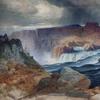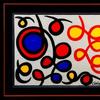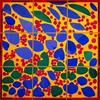'Tipping Point: Artists Address Climate Change' Among 3 Exhibits at Rockland Center for the Arts
- WEST NYACK, New York
- /
- January 05, 2018

Rockland Center for the Arts in West Nyack, New York, will present three exhibitions this spring concerning issues of our environment - The Tipping Point: Artists Address Climate Change, Aqueous Remains, and Quotidian Metamorphisis. From March 25 - May 25, 2018, these compelling exhibitions explore the relationship between nature and humanity, capturing the environmental impacts of human resources. It is not just about climate change, but also a humanitarian issue. Artists present work that first appears beautiful but, ultimately, reveals an ugly truth underneath of damage, transmutation and the decomposed. These exhibits offer a fresh perspective on critical environmental issues and exemplifies our capacity to understand, adapt and motivate in the face of danger.
Tipping Point: Artists Address Climate Change - Artists J. Henry Fair, David Maisel, Alison Moritsugu, Richard Parrish, Jill Pelto, will exhibit in The Tipping Point.
J. Henry Fair’s aerial view photographs stimulate an aesthetic response, and dialog. They are essentially about irony and hope. All of us are living unsustainably, but with a little effort and luck, these limitations could be overcome, ensuring a secure future. The images are beautiful but reveal a hidden secret. Fair is committed to reveal the evidence of the devastating costs of our choices on our planet.
Alison Moritsugu paints bountiful landscapes reminiscent of the 19th century directly on tree trunks and wood slices with bark intact. These landscape sculptures appear to pay homage to the idyllic Hudson River School yet is countered by the evidence of its destruction. Her work acknowledges our more complex and precarious relationship with the environment.

David Maisel’s images of radically altered terrain have transformed the practice of contemporary landscape photography. Maissel’s images of environmentally impacted sites consider the aesthetics and politics of open pit mines, clear-cut forests, rampant urbanization and sprawl, and zones of water reclamation. These surreal and disquieting images take us towards the margins of the unknown.
Jill Pelto is an Artist and a Scientist; currently a Masters of Science student studying the Antarctic Ice Sheet at the University of Maine. Her love of nature and wilderness drives her to use creativity to communicate information about extreme environmental issues with a broad audience. She has conducted research on the mountain glaciers of Washington and British Columbia, in the Dry Valleys and Transantarctic Mountains of Antarctica, over the rolling hills and carved cirques of the Falkland Islands, and around the aqua lakes and ochre mountains of New Zealand. Jill sees nature as a work of art, and the origin of her observational skills uses her academic training and field research in Antarctica to fuel her artwork. She creates glaciogenic art with the goal of communicating scientific knowledge through art.

Richard Parrish is an artist and an architect. He finds inspiration in both the natural and the human-made environments. His glass sculptures investigate the intersections and collisions between the natural landscape and the human impositions on that landscape. It is concerned with both physical and temporal conditions, rooted in the landscape of the intermountain west in the United States.
Aurora Robson, exhibiting in Aqueous Remains, is an eco-activist that explores the relationship between nature and humanity. She is the founder of Project Vortex, an international organization of artists, architects and designers working with plastic debris – working with Project Kaisei to reduce the amount of plastic debris littering our oceans and shorelines. She creates lively and intricate sculptures from plastic debris to address urgent issues poetically to inspire others to rethink and reinvent plastic waste in ways that promote creative stewardship of our global waterways. Her work helps us recognize the monumental effects of plastic waste on distant ecosystems and provides strategies towards intercepting the waste stream and upcycling discarded plastics into new objects.
Jaynie Crimmins, exhibiting in Quotidian Metamorphisis, creates art from her shredded financial statements and junk mail. Junk mail is difficult to recycle because the inks have high concentrations of heavy metals. Crimmins elevates the ordinary and overlooked aspects of our daily existence, her intimate pieces use an economy of means and restrain of process. Crimmins sews shredded mail to reflect the form and function of fragile marine ecosystems.
The three exhibitions will be on view March 25 through May 25, 2018. A panel discussion on Climate Change with thought leaders from science, art and the humanities will take place on May 12, 2018. Exhibitions and the Panel Discussion are Free to the general public. For more information contact: Rockland Center for the Arts, 845-358-0877, info@rocklandartcenter.org or visit www.rocklandartcenter.org . Rockland Center for the Arts is located at 27 S Greenbush Rd., West Nyack, NY 10994. Regular hours are: Mon-Fri 10-4; Sat 1-4, and Sun 1-4 pm.
RoCA’s programs are made possible, in part, with funds from the New York State Council on the Arts, with the support of Governor Andrew M. Cuomo and the New York State Legislature.
















_(17100x100_c.jpg)